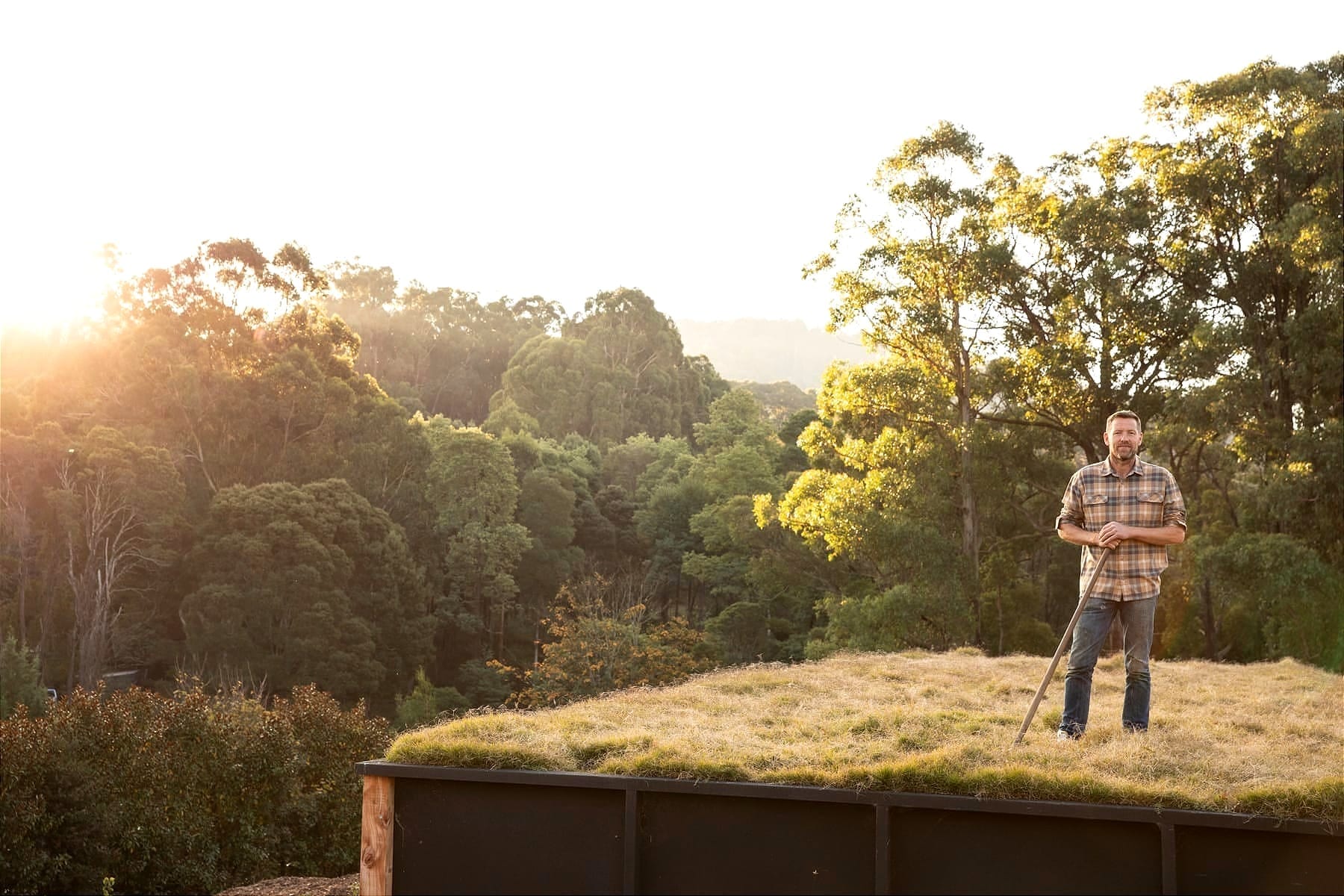
Zero-waste activist Joost Bakker is building a house of “mind-blowing” hemp.
Words Larissa Dubecki
Photography Martina Gemmola
THE chances of zero-waste activist Joost Bakker being described as a slash-and burn farmer are precisely ... well, zero. The creator of ecological marvels such as Future Food System, a completely self- sustaining home that occupied Melbourne’s Federation Square for almost two years, has dedicated his life to creating ecosystems rather than destroying them.
So when he grew a crop from which to construct a house, and then set the house ablaze, it was in aid of his latest environmentally driven obsession: proving that hemp can create an extraordinarily resilient building material while also restoring soil.
“I believe hemp is an amazing solution to the need for sustainable building materials because it has so many benefits,” says the Dutch-born flower farmer, florist and eco-activist. “We even used Australian-grown hemp to make the window frames and door and replaced some of the steel ribs and parapet with hemp structural beams and bearers. It was a 45-minute controlled burn by the CSIRO and the results were pretty crazy – the temperature outside was 1250 degrees while inside it went from 27 degrees to just 31 degrees.”
Among the many attributes of hemp that he rattles off effortlessly are its short growing time – it can reach nine metres in 100 days. It’s a natural weed suppressant and its roots tunnel down two metres, forming pipelines in the soil that, when the plant dies, allow water and nutrients to fertilise the next crop. Plus it already has a great track record; hemp was used to clean contaminants from the soil at the Chernobyl nuclear disaster site and has proven its efficacy in restoring land poisoned by the powerful chemicals DDT and dieldrin, which can contaminate soil for decades.
“People don’t realise that in Australia we have a lot of agricultural land that can’t be used for food production because of contamination. It blows their minds that hemp can do all these amazing things,” says Bakker. “When you look at the world through a zero-waste lens there’s unexplored abundance everywhere. My dream is that these restorative building materials replace existing, destructive materials.”

You could say that the world has caught up to Joost Bakker. Based in Monbulk, in the Dandenong Ranges near Melbourne, he is largely self-taught – “I see things that could be improved, and I just think, why not?” – plus he has the knack of attracting a tribe of experts on each of his quests.
His projects typically combine science, design, hospitality, architecture and horticulture. A potted history of his cross-disciplinary activism includes showing how worm farms can be used to process commercial kitchen waste; opening the world’s first zero-waste restaurant (Silo, in 2011); and harvesting human urine for fertiliser (diners contributed to the pee-powered mission at his Greenhouse restaurant pop-up in 2012). For his efforts, he’s received global media attention, been threatened with fines and jail time (more on that later) and was named the Melbourne Food & Wine Festival’s inaugural Sustainability Champion in 2021.

But back to the hemp.
The experimental burn in late March was in aid of a house Bakker has designed for actor and fellow environmental obsessive Zac Efron near Mount Warning, in the New South Wales Northern Rivers region. “It’s like the Daintree, it’s so beautiful. Zac bought a few hundred acres, and he said you can’t cut a tree down. But in order to do that we need the highest resilience rating for bushfires, and because I’m using this new material, I had to do that test. The results were overwhelming.”
His questing nature has made Bakker a maverick, happiest building houses and hospitality businesses for himself, free from the diktats of business. But in Efron he’s found a kindred spirit. “I generally find it too frustrating to be told ‘you can’t do that’, but with Zac it’s been a dream because he’s pushing me to take my ideas further and make the most sustainable building possible.”
As for hemp becoming a building material available to mere mortals as well as Hollywood stars? Bakker believes that’s on the horizon, albeit after more work and testing.
“I’m learning that introducing a completely new material is unbelievably complex – especially scaling the factory that produces the hemp products,” he says. “But everything is about timing. The cost of timber and other things has gone up to the point [that hemp is] now viable. I’ve got other farmers looking at it going, wow, on scale as a crop, hemp really stacks up. When you factor in that it’s fire-resistant, that it creates a really strong beam, that you can use less of it ... there’s a lot going for it. I wouldn’t be surprised if it’s a really common material in five years’ time.”
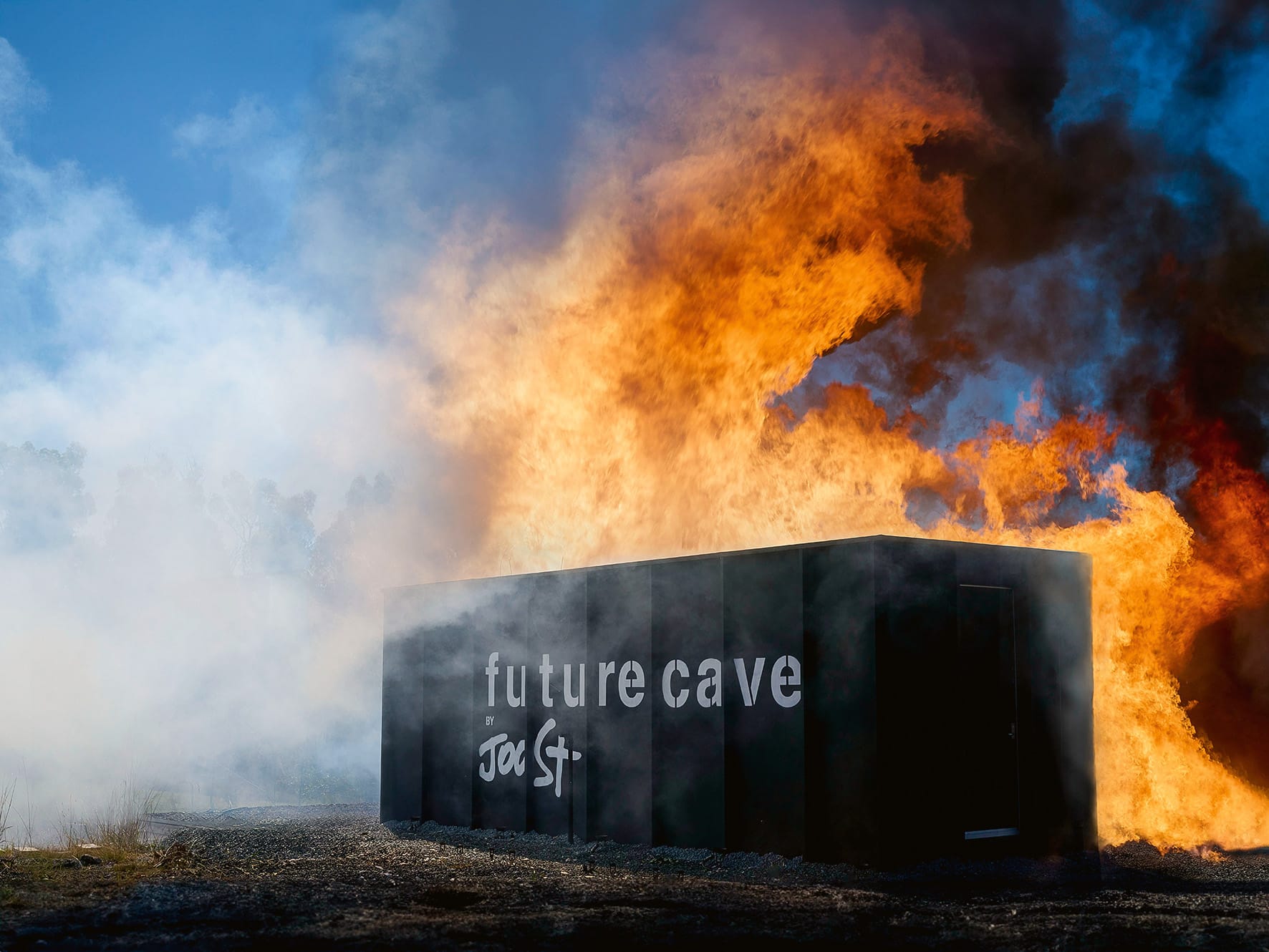
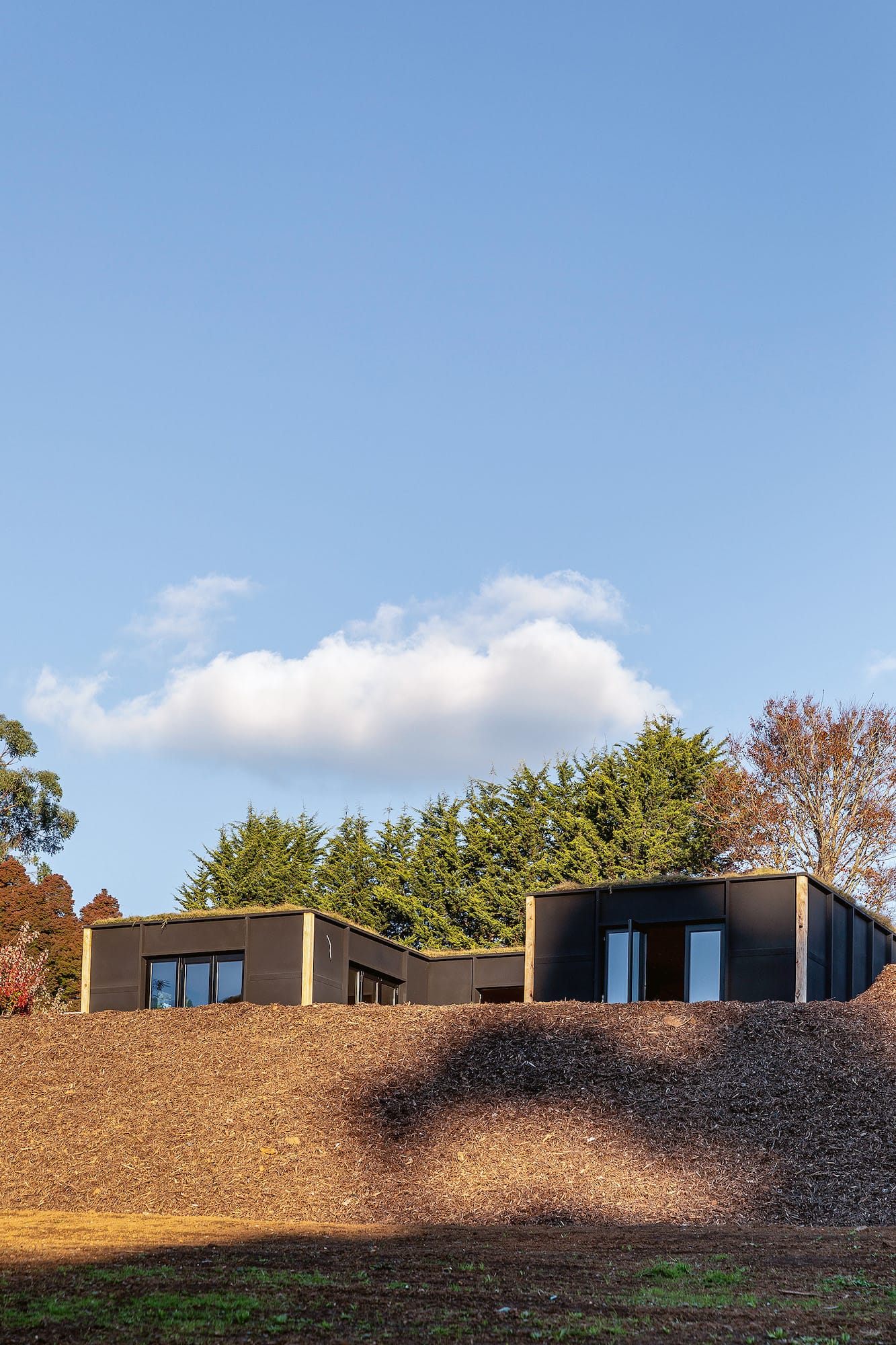

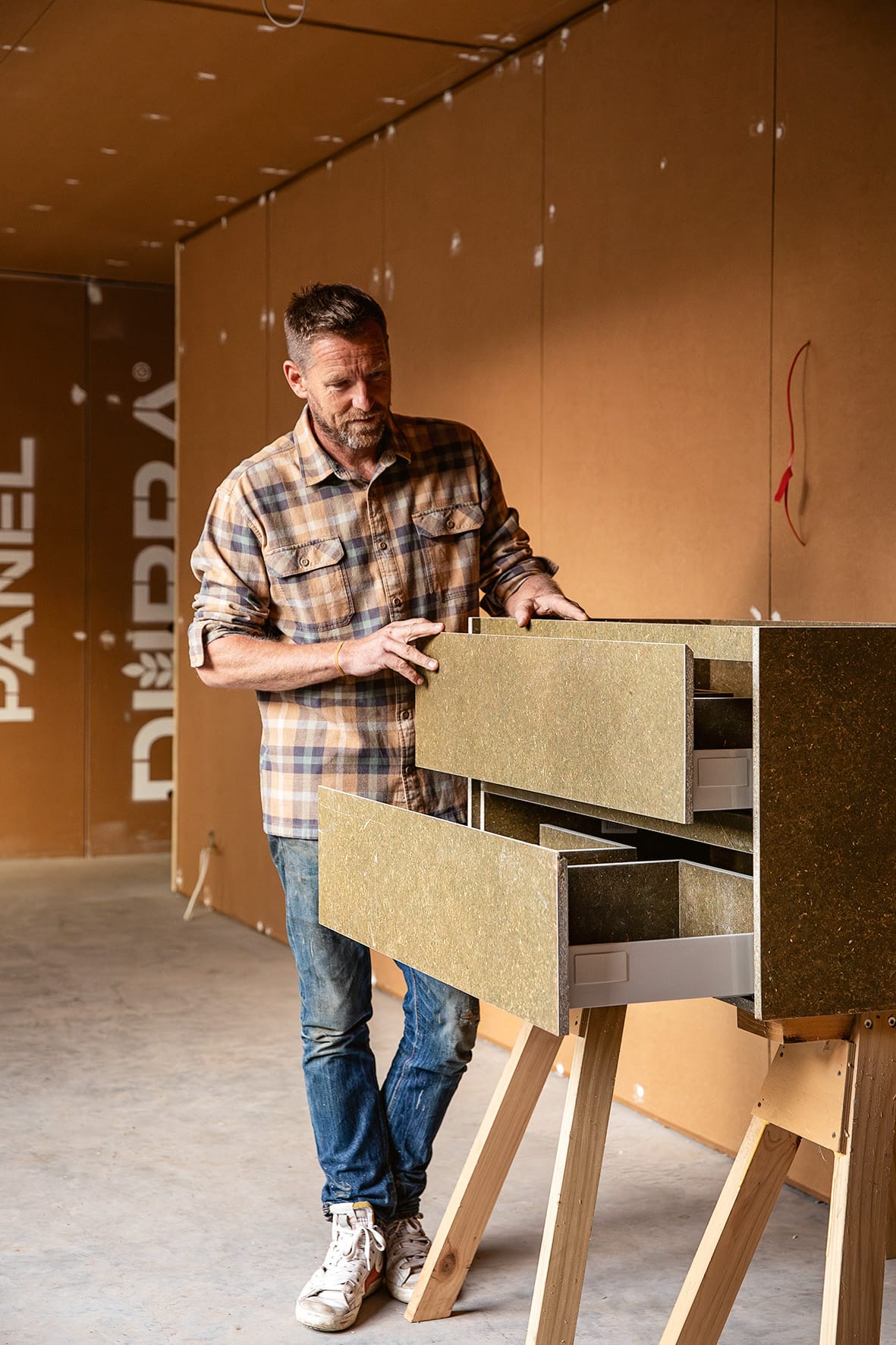
Clockwise from top left CSIRO’s controlled burn tested hemp’s fire resilience; the eco-house Bakker is building for his mother in the Dandenong Ranges; all-hemp kitchen drawers; “wicking bed” roof. Photography by Martina Gemmola.
Bakker’s own mother is on the frontline of the hemp revolution. She’s about to become the proud owner of the world’s first all-hemp kitchen at the eco-house he’s building for her in Monbulk. Putting into use the knowledge gleaned from Bakker’s Future Food System, the home also features a flat roof that is essentially an enormous wicking bed – a self-contained garden bed with a reservoir in the bottom – designed to become habitat for endangered species.
“Wicking beds are an amazing Australian invention by Colin Austin, who came up with the idea in 1984 for World Vision when he was invited to Africa to create more resilient food systems,” says Bakker, with a typical burst of enthusiasm. “They store water below the soil and the plants use it when they’re thirsty. It creates food full of goodness – people said at Future Food System ‘that’s the best carrot or vegetable I’ve ever tasted’ and it’s because it’s so nutrient-dense.”
The efficacy of wicking beds has already been proven in Monbulk, where the roof withstood a six-week dry spell. “It never dried out because it held water from that previous time. When it rains it doesn’t run off, rather it’s slowly absorbed. It’s a really simple solution for the stormwater situation we’re facing globally because we’re constantly adding hard surfaces like roads, driveways, buildings and paving. If we can reimagine our buildings to be like ecosystems, we can counteract that.”
His mother’s wicking beds have been planted not with food but with greenery that will attract butterflies and native birds. A butterfly breeder contributed a list of plants including yam daisies, which rabbits devour because of their high nutrient levels, while nesting boxes have gone up for helmeted honeyeaters.
“The idea is the house becomes a sanctuary and a way to increase habitat. It’s a reverse of the conventional process in which our buildings take away habitat,” he says. “It’s estimated we will build over two billion homes in the next four decades – what an incredible opportunity to create not only shelter but habitat for wildlife.”
Things are looking rosy with the promise of hemp and his mother’s ecological house, but Bakker has weathered his share of disappointments. Recently he abandoned a long-term project to prove the economic viability of turning plastic back into oil through a process called pyrolysis.
“I tried for 20 years. I really thought it was going to get up – we realised a safe and efficient system; most importantly, it was affordable. It’s one of those situations where people don’t understand how simple it is to turn plastics back into oil, whereas the recycling of plastic is just too complicated to be commercially viable. It’s 10 times more expensive to make a plastic bottle out of recycled plastic in comparison to virgin. Take an aluminium can – it’s six times cheaper to make a can out of an old can. There’s incentive there. Plastic is the reverse.”
Test results were proving fruitful, says Bakker. Then the Environmental Protection Authority stepped in. “I got a substantial fine and threatened with jail time if I didn’t stop immediately and just decided it wasn’t worth it anymore,” says Bakker, still despondent at the 11th-hour failure of the venture.
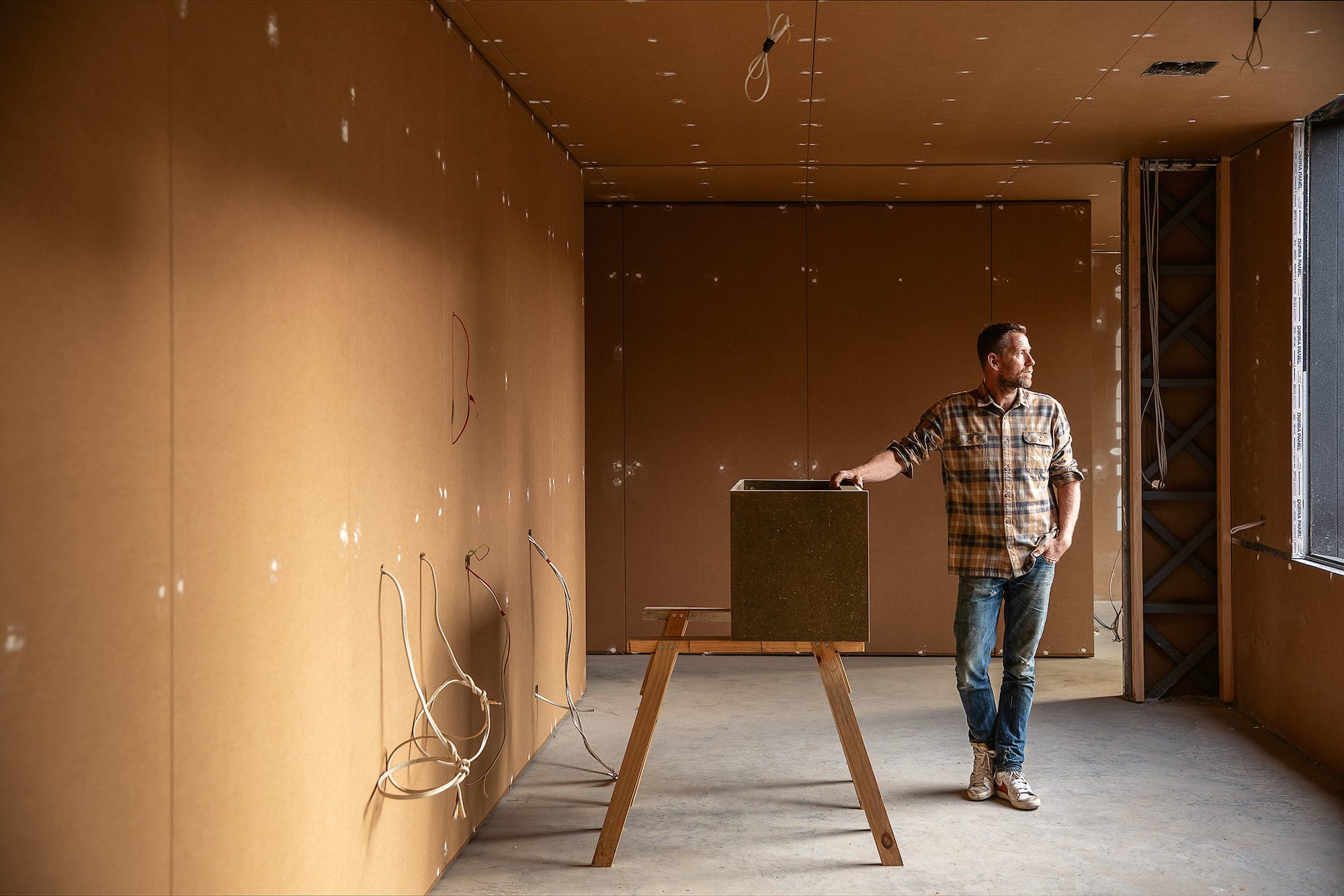
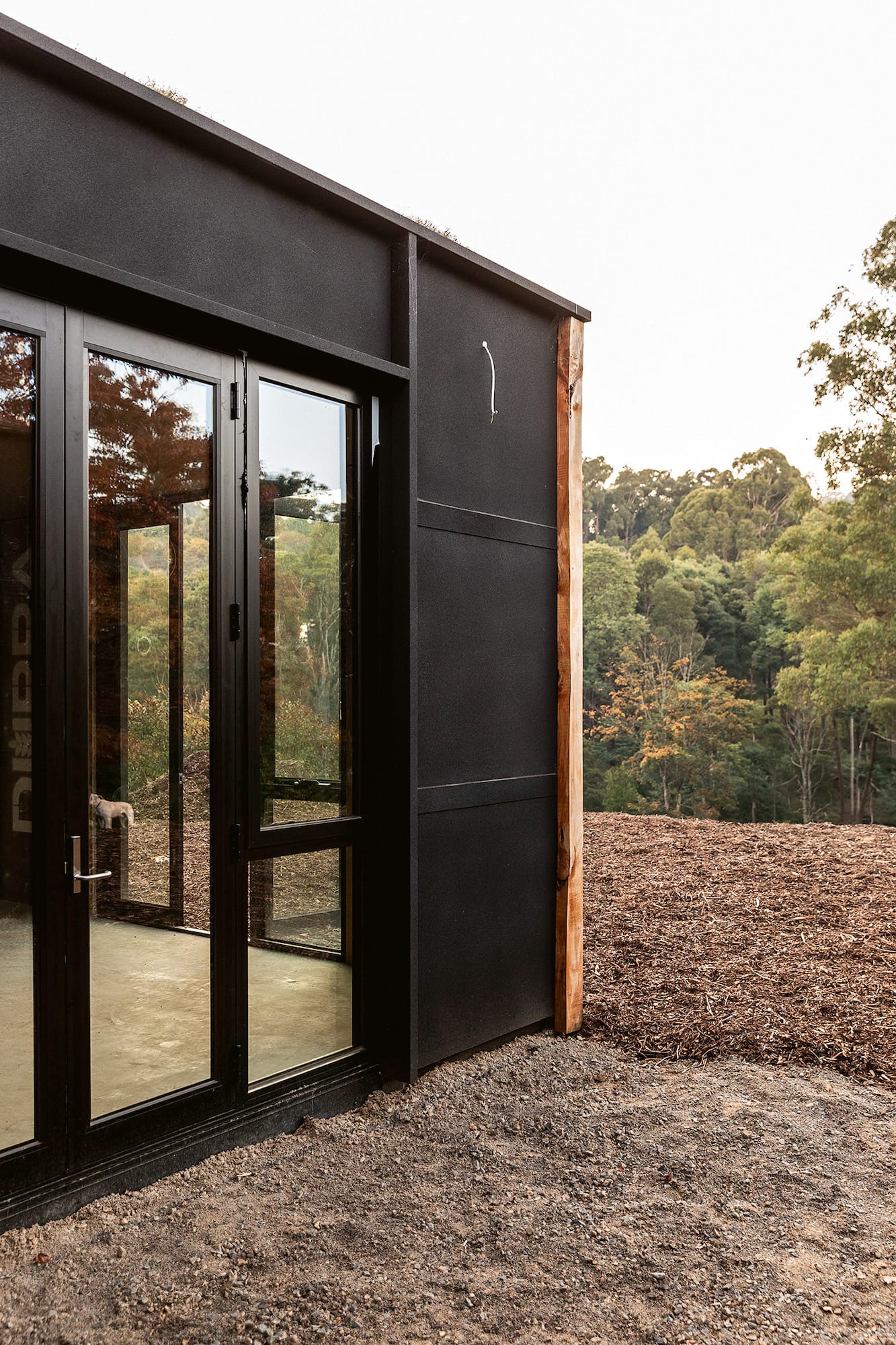
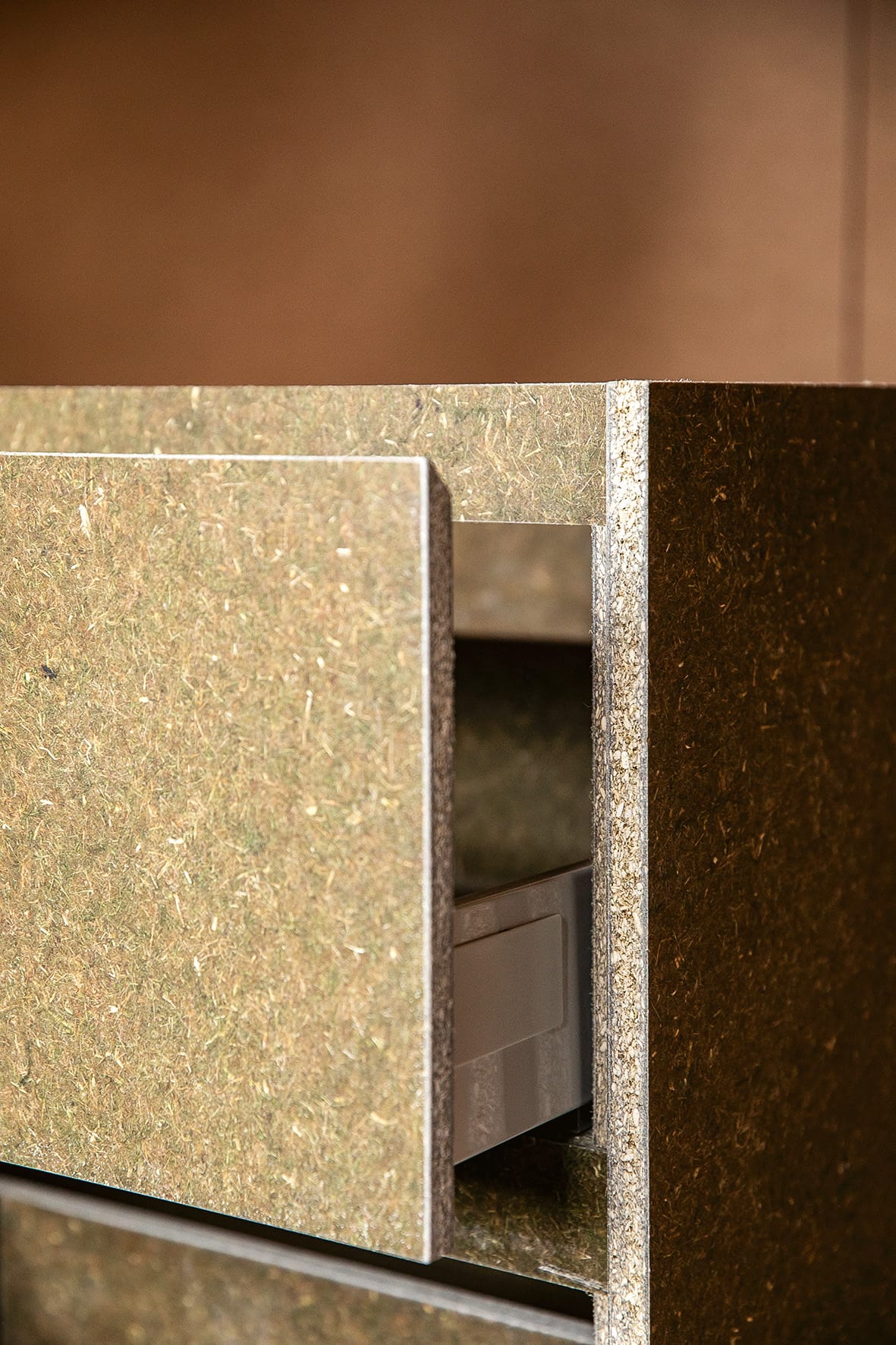
Bakker in the kitchen of his eco-house. As a sustainable building material, “hemp is an amazing solution”, Bakker says. Photography by Martina Gemmola.
But like hemp’s life-giving roots, his holistic ideas are continuing to fertilise innovative projects. This year, for instance, he has worked with Woodleigh School on Victoria’s Mornington Peninsula where five new classrooms are being constructed using hemp and green roofs, aquaponic systems and mushroom walls.
“It’s basically Future Food System on steroids. The whole design is open source, which means the money Woodleigh has spent on the design and engineering means other schools can use it for free to get their own built.”
The buildings are expected to be ready for the start of the 2025 school year, giving Year 10 students the chance to be actively involved in their learning spaces, monitoring which species to plant, the energy use of each classroom, the running of the aquaponic systems and more.
“It makes total sense to me and thankfully it makes total sense to a lot of other people,” says Bakker. “After all, why build a house or a classroom when you can create an ecosystem?”